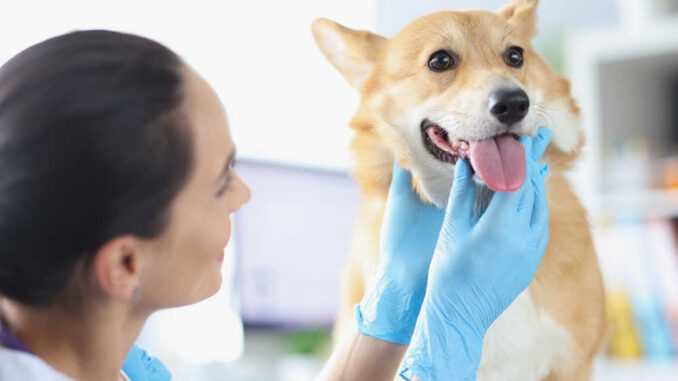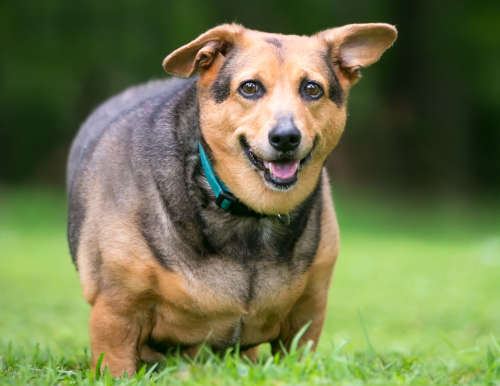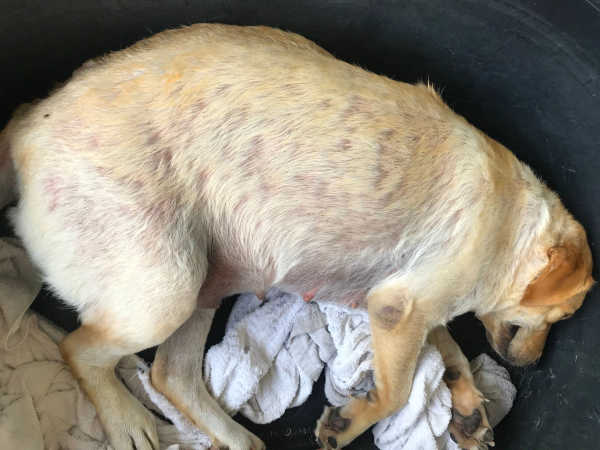
An owner brought her Beagle dog in for an exam at my vet’s practice because the Beagle was gaining weight and seemed to tire quickly on short walks. My examination revealed the pooch had thinning hair, increased skin thickness, and mental dullness. I recommended a thyroid test and this confirmed my suspicion that the dog suffered from hypothyroidism. Thyroid problems in dogs can indeeed lead to excess production of thyroid hormone (hyperthyroidism) or decreased thyroid hormone production (hypothyroidism). The former condition is rare in dogs while the latter condition is fairly common.
In this article, we’ll look at the different types of thyroid problems and how you can recognize them. Then, we’ll explain how your veterinarian will treat the condition and how you can help your dog at home.
How will I know if my dog has thyroid issues? What are the common signs?
Thyroid problems generally appear in middle-aged(average 7 years) dogs. Because your dog is more likely to suffer from hypothyroidism, we will start with the common symptoms of this condition.
Common signs of hypothyroidism (most likely condition)
1. Weight gain/obesity
Dogs will gain weight without any increase in appetite.

2. Lethargy
Your dog will spend more time sleeping and lying around as thyroid hormone levels drop in the blood.

3. Exercise intolerance
There will be a change in your dog’s stamina so that he tires quickly during exercise.
4. Hair loss/increased shedding
You may notice your dog shedding more than usual. Over time, the hair may thin out.

5. Mental dullness
Without thyroid hormone circulating in the blood, your pooch will lack alertness and mental sharpness.
The common signs of hyperthyroidism are:
- Weight loss – Because the levels of thyroid hormone are elevated, your dog will be more active and have an increased metabolism. He will start to lose weight.
- Increased appetite – With increased agitation and higher metabolism, your pooch will be hungrier and want to eat more.
- Increased thirst/urination – When the thyroid gland secretes excess thyroid hormone, it triggers an increase in blood calcium. The elevated electrolyte content causes your dog to drink and pee more.
- Elevated heart rate – An increase in thyroid hormone stimulates the heart to beat faster.
Pictures of dogs with thyroid problems – early vs. late stages
Early-stage example
In this picture of early-stage hypothyroidism (WagwalkingWeb.com), the golden retriever has mild weight loss and appears lethargic.
Advanced-stage examples
This image shows a dog with more advanced hypothyroidism (DogAware.com). Notice the thinning hair and extreme obesity in the Shetland Sheepdog.
In this picture of a Labrador Retriever with a later-stage case of hypothyroidism, you can notice obesity and a dull look. The facial muscles are drooping.
In this Labrador Retriever, you can see a thin, patchy hair coat and a rat-tail appearance. This dog is also overweight.
How do veterinarians diagnose thyroid problems in dogs?
When your veterinarian examines your dog to determine if he has a thyroid problem, she will begin by getting a history of the symptoms and your pup’s overall health. The complete physical examination will include neck palpation and assessment of all body systems.
Screening for hypothyroidism
If the findings of the history and physical support hypothyroidism, your veterinarian will conduct blood tests to measure the levels of thyroid hormones in the blood.
- Total Thyroxine(T4): The first test the doctor will run is Total T4. This screening test is a measure of all thyroxine in the bloodstream. A normal level means your pup is not hypothyroid. If the value falls below or is in the low normal range, your veterinarian will need to conduct additional tests.
- Free T4: The next measurement is Free T4 which measures the amount of unbound thyroxine in the bloodstream. If results fall in the normal range, your pooch is in the clear. When Free T4 levels are below the normal range and there are clinical signs, the results are a strong indicator that your dog has hypothyroidism. This test is more expensive than total T4 and it takes longer.
- Endogenous thyrotropin(TSH): Thyroid-stimulating hormone(TSH) is secreted by the pituitary gland as a part of a feedback loop. In hypothyroid canines, the TSH levels may be increased level as the body attempts to stimulate the thyroid to put out more hormones. TSH should be measured and compared with Total T4 or Free T4.
Diagnosis of hyperthyroidism
Hyperthyroidism in dogs is almost always caused by a cancerous tumor. If your dog presents with symptoms of hyperthyroidism, your vet will conduct diagnostic tests which may include:
- Bloodwork which includes a CBC, blood chemistry, and T4 levels
- Urinalysis to rule out other causes of increased thirst and urination
- Ultrasound of the neck and heart
- CT scan or MRI
- Thyroid scan
How are thyroid problems in dogs treated?
Treatment for hypothyroidism
Hypothyroidism is treated with daily supplementation medication. If you suspect your dog may be hypothyroid or have another endocrine issue, make an appointment with your veterinarian as soon as possible.
The treatment for hypothyroidism involves oral thyroid hormone replacement and routine testing for the remainder of your dog’s life. Although it may take your veterinarian some time and trials to find the right level of thyroxine for your pup, the prognosis is highly favorable. Dogs that receive hormone replacement therapy usually return to normal with a full life expectancy.
Treatment for hyperthyroidism
The treatment of choice for hyperthyroidism is the surgical removal of the tumor provided the mass has not adhered to other tissues and can be safely resected. If surgery is not possible, other options are radiation therapy or chemotherapy. Many times, dogs will suffer from hypothyroidism following the removal of the thyroid tissue and will require hormone replacement therapy as described above. The prognosis for your pooch will depend on whether the tumor has metastasized. Early diagnosis and treatment increase the chances your dog will live a full life.
How can I help my dog at home when he has thyroid problems?
You can support your dog’s condition by providing a healthy, balanced diet. Proper nutrition gives his body the tools it needs to function properly. Consult with your veterinarian and select a diet that provides
- Essential amino acids from lean animal protein sources
- Digestible carbohydrates
- A caloric content that promotes a healthy weight
- Probiotics to promote gut health
- Supplemental ingredients including omega fatty acids and vitamin E to support the skin and coat
Disclaimer: This website's content is not a substitute for veterinary care. Always consult with your veterinarian for healthcare decisions. Read More.


Be the first to comment